
Korat
Korat
Korat
Famous in Japan, the Russian Blue, the slightly plump Chartreux, and now we introduce the 'Korat'. These three types are collectively known as the 'Blue Cat Big Three'. The Korat has a long history of being cherished as a 'cat that brings good luck'. In addition to this, this page compiles many secrets about the Korat. Let's delve into them!
Korat Basic Infomation
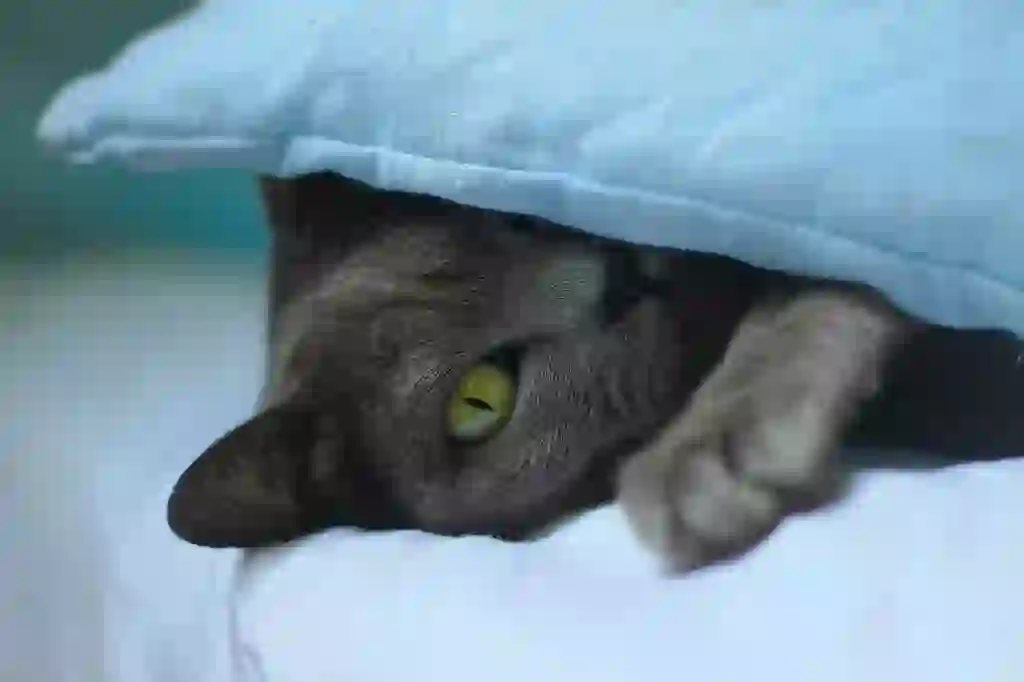
Country of Origin: Thailand
Weight: Both males and females range from 3 to 4.5 kg
The Korat has a very long history, dating back to the Ayutthaya period of Siam (now Thailand), where it was known in Thai as 'Si-Sawat', meaning 'bringer of luck and fame'. Its beautifully shimmering silver coat and rare heart-shaped head, along with budding green eyes, were considered symbols of wealth.
Despite its long history, the Korat's appearance has hardly changed due to minimal human intervention, which could be considered miraculous. There are several lucky episodes from those times to share about the Korat.
Thailand, like Japan, has rice as a staple food. During rituals for rainmaking in rice cultivation, the Korat, likened to 'clouds that bring the benevolent rain', was sprinkled with water to pray against drought. Another story tells of couples who received a pair of Korats as a wedding gift being blessed with happiness, making the wealth-symbolizing Korat perfect for such occasions.
In the late 1800s, the Korat first appeared in a cat show in England, initially introduced as a variety of Siamese. In 1959, Jean Johnson imported a pair of Korats to America, starting serious breeding efforts. Over time, by 1965, the Korat was officially registered with the CFA.
Korat Q&A

What is the origin of the Korat's name?
It is said that King Rama V of Siam (now Thailand) named the Korat.

What are the color variations of the Korat?
The Korat is only available in blue color. It features a solid color across the face, body, legs, and tail.
Green is the only eye color for Korats.
The Korat is a shorthair breed.
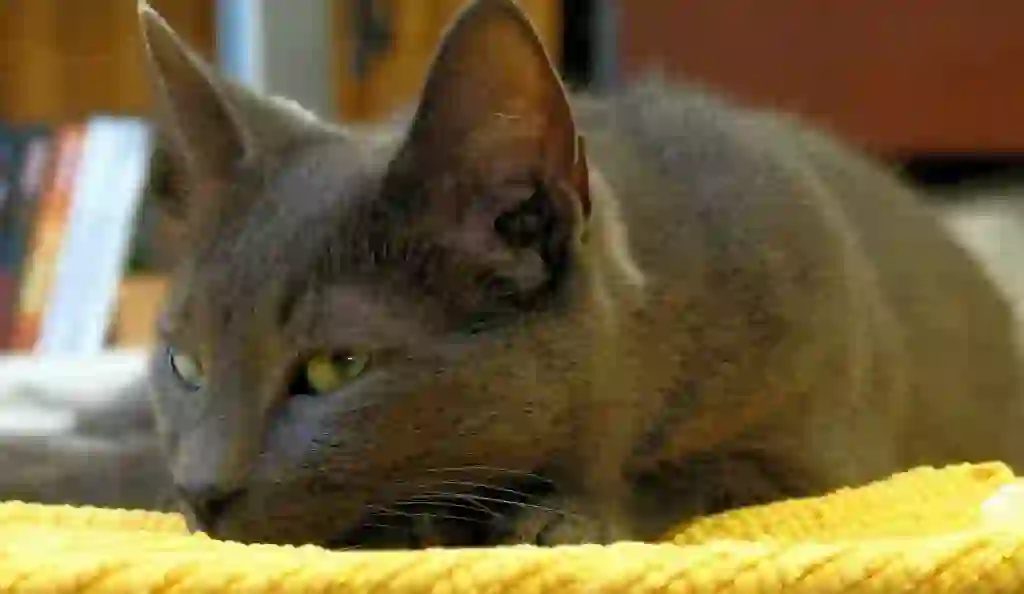
What does the Korat look like?
The Korat has a heart-shaped head, shimmering green eyes, and large ears that are wide at the base. It has a semi-cobby body type, well-muscled but sleek, with long legs. The coat of the Korat is exclusively silver-blue, which changes shade as it grows and shimmers in different lighting.
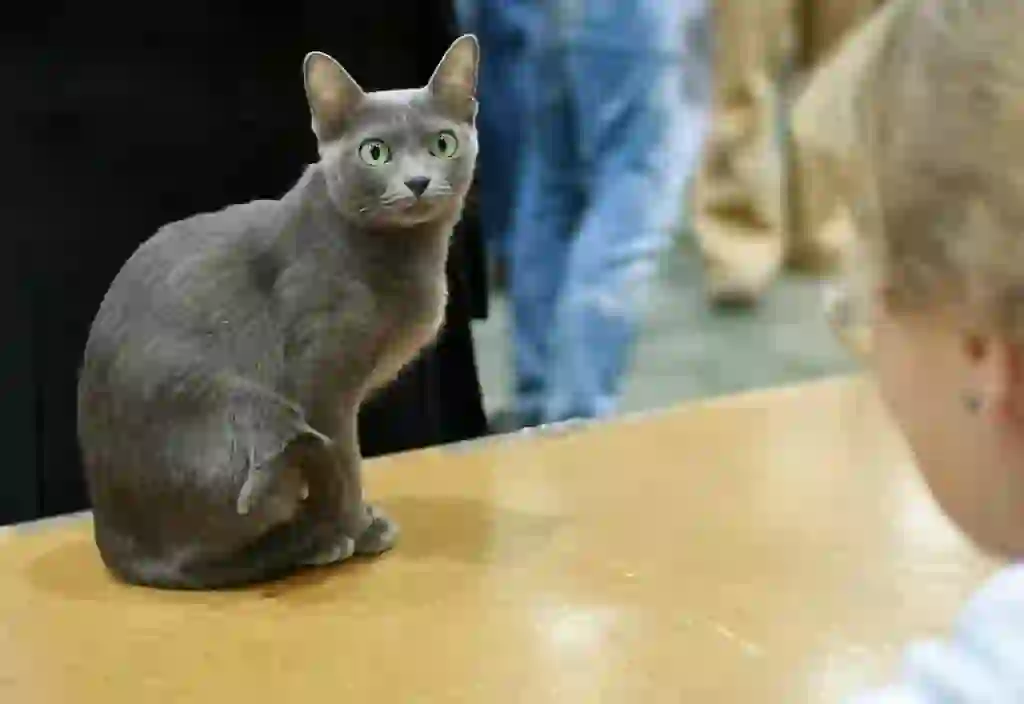
What are the differences between the Korat and the Russian Blue?
Both the Korat and Russian Blue have shimmering silver-blue coats, but the Korat's coat has more depth of color, while the Russian Blue's coat appears lighter. The Korat's coat sparkles in light due to this reason.
The Korat has a heart-shaped face with a developed jaw, while the Russian Blue has a wedge-shaped face.
Both breeds have green eyes, but their coat structures differ: the Korat has a single-layered coat, while the Russian Blue has a double coat. This difference is likely due to their countries of origin: Thailand, which is hot and humid, and Russia, which is cold, respectively.
Personality-wise, the Korat is affectionate and sociable, while the Russian Blue is more independent but loyal to those it trusts.
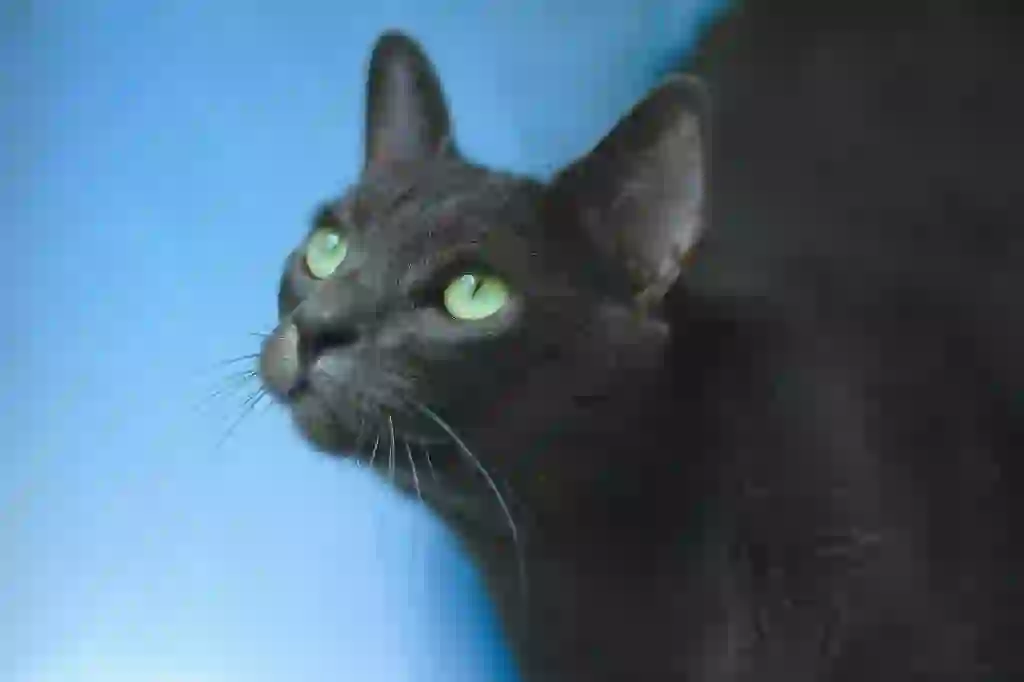
How much does it cost to buy a Korat?
Korats are rarely seen in pet shops, so purchasing one from breeders or catteries is common. The cost ranges from 150,000 to 250,000 yen. If you find a Korat you like, it is advisable to visit and see the cat first.
Purchasing from a cattery, which requires higher qualifications than a general breeder, can be more expensive. Catteries must be accredited by breed registries such as CFA and TICA, which adds value and ensures trustworthiness. The higher price reflects this trust.
Other factors affecting the price include the cat being a kitten and having an excellent pedigree.
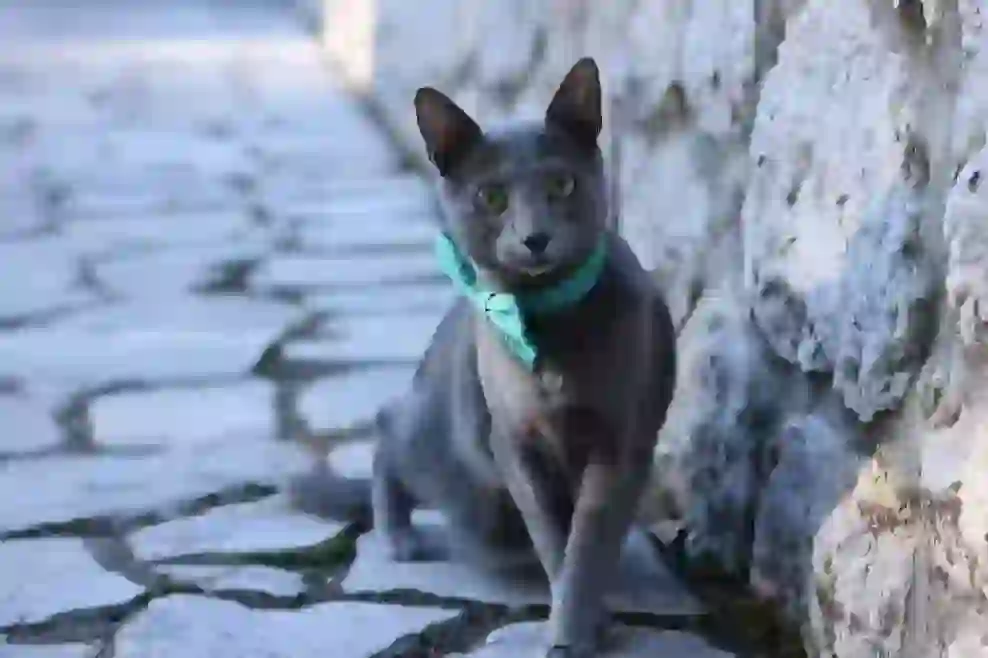
What are the personality traits and characteristics of the Korat?
As mentioned in the differences with the Russian Blue, the Korat is not shy with strangers and will approach people on its own. However, it maintains typical cat-like independence and may walk away when bored. Many cat lovers find this trait charming.
The Korat tends to be particularly affectionate towards its owner rather than the entire family. It wants to be the center of attention and may sulk if it feels neglected. Being a breed that dislikes being alone, the Korat struggles with long periods without company, making it challenging to keep if you are frequently away from home.
The Korat is relatively intelligent and easy to train. It enjoys active play with its owners, such as fetching toys. However, it can be stubborn, insisting on keeping its favorite toys or meowing loudly to get its way. This cleverness allows the Korat to sometimes manipulate situations in its favor.
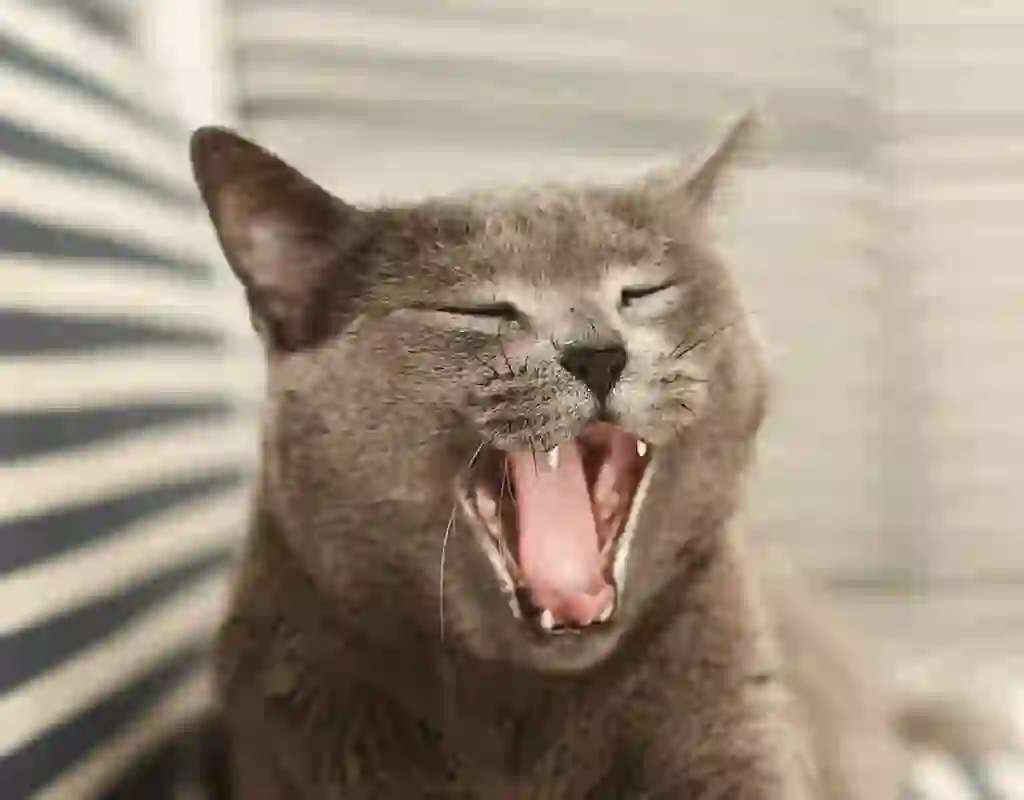
What diseases are Korats prone to?
Korats are prone to developing lower urinary tract diseases and chronic kidney disease. Cats historically do not drink much water, which puts a strain on their kidneys and leads to urinary issues.
Specific problems include urinary stones, which can block the urinary tract and cause bladder infections. If you notice changes in your cat's bathroom habits or blood in the urine, seek veterinary care immediately.
While diet and water intake can help prevent these conditions, chronic kidney disease remains a risk due to genetic predispositions. Regular health screenings can help manage this disease by slowing its progression through symptomatic treatment.

What is the lifespan of the Korat?
The lifespan of the Korat is typically 11 to 15 years, which is slightly shorter than the average lifespan for cats, which is 12 to 16 years.

Would you like to become a part of the 'Animalbook.jp'?
Turn your knowledge into Q&A and share it with the world. ※Publication will be activated after purchase. Let's share information together!
Korat Type of List
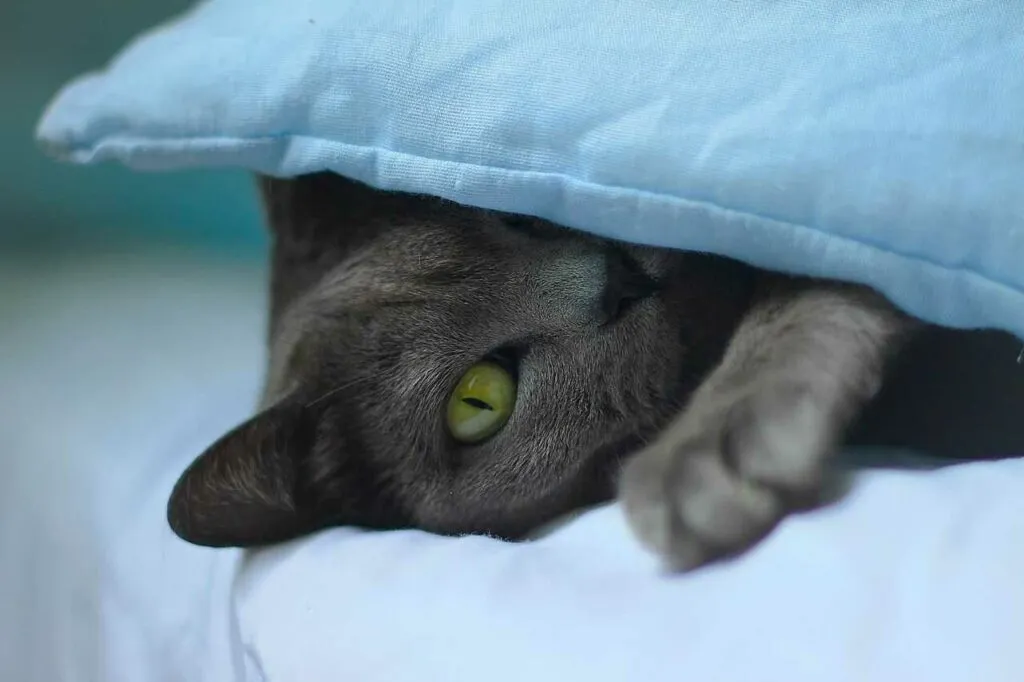
- Korat
Information
Congratulations! You are the first commenter!

Create Your Favorite List!
Korat
Save the animals you love! Build your own list to quickly revisit your favorites later.

Would you like to leave a comment?
※Please note: This is for the purchase of rights to post comments within the article.
Find Your Favorites!
Our shop offers a unique and attractive selection of goods themed around various animals.
Korat References

- まるごとわかる猫種大図鑑 監修:CFA公認審査員 早田由貴子
- 世界中で愛される美しすぎる猫図鑑 監修 今泉忠明
- The Cat Fancier's Association, Inc. https://cfa.org/korat/
- 猫との暮らし大百科 https://www.anicom-sompo.co.jp/nekonoshiori/
- みんなの猫図鑑 https://www.min-nekozukan.com/
- Pet Smile news forネコちゃん http://psnews.jp/cat/
- 子猫のへや https://www.konekono-heya.com/sitemap.html
- ねこちゃんホンポ https://nekochan.jp/
- 公益社団法人 埼玉県獣医師会 https://www.saitama-vma.org/topics/猫の遺伝性疾患について/
Korat Introduction of media used

出典:https://unsplash.com/photos/izL9-TQq0Qc

出典:https://commons.wikimedia.org/wiki/File:KOR_1149.jpg

出典:https://commons.wikimedia.org/wiki/File:Korat.jpg

出典:https://commons.wikimedia.org/wiki/File:Korat_in_cat_show.JPG

出典:https://unsplash.com/photos/NLSjrj5S-pg

出典:https://pixabay.com/images/id-4122353/

出典:https://unsplash.com/photos/MDyDsq73SwY

Help Enrich Our Animalbook.jp with Your Media!
We are constantly looking to expand and enrich our Animalbook.jp with amazing photos and videos of animals. If you have any media that you'd like to share, please contribute and help us showcase the beauty and diversity of the animal kingdom. Your submissions will be credited and featured in our encyclopedia, reaching a wide audience of animal lovers.


















